Figures & data
Table I. Mean and range of the repeatability coefficient for measuring MFTA using three methods of tracker fixation and applying three conditions of coronal stress throughout the range of knee flexion tested. All kinematic parameters measured in the study are summarized in this table and identified in the first column. (No range is given for maximum extension/flexion as this is a single point of measurement.)
Figure 1. Repeatability coefficient at each 10° interval of knee flexion for all three methods of tracker mounting (bone screws, rubber strapping and fabric strapping). Repeatability was acceptable (<3°, indicated by red line) throughout flexion for bone screws and fabric strapping, but unacceptable for rubber strapping beyond 50°.
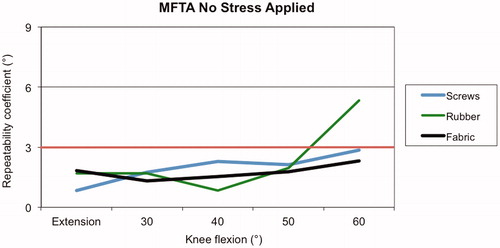
Figure 2. Repeatedly measuring MFTA with application of valgus stress resulted in a repeatability coefficient of >3° when flexing the knee beyond 40° when using fabric strapping and beyond 50° when using rubber strapping. Bone screw fixation of trackers resulted in satisfactory repeatability throughout.
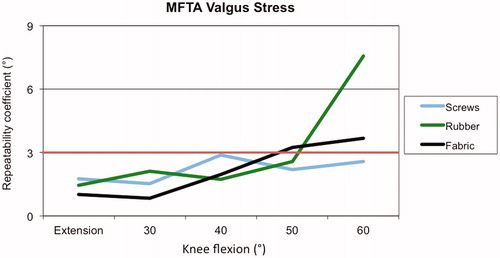
Figure 3. Repeatability of measuring MFTA with application of varus stress was again worsened by flexion. Fabric strapping remained acceptable until >50° knee flexion, rubber strapping until 30° knee flexion. Bone screw fixation gave a repeatability coefficient of 3.1° at 40° knee flexion, then remained acceptable.
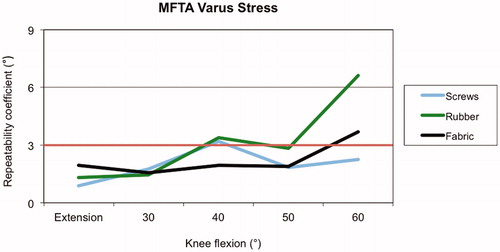
Figure 4. Bland-Altman plot displaying the mean difference between MFTA measurements with trackers secured using bone screws and fabric strapping against mean MFTA measurements.
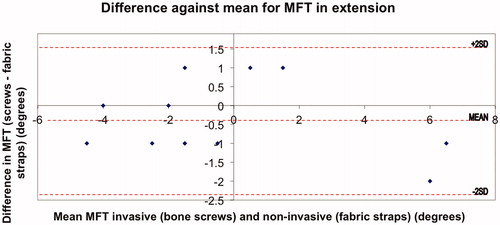
Figure 5. Bland-Altman plot displaying the mean difference between MFTA measurements with trackers secured using bone screws and rubber strapping against mean MFTA measurements.
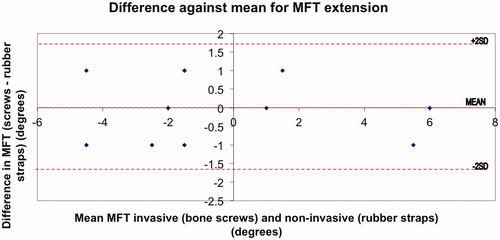
Table II. Mean limits of agreement and range for screws versus rubber straps and screws versus fabric straps for the entire range of flexion tested. All kinematic parameters measured in the study are summarized in this table and identified in the first column. (No range is given for maximum extension/flexion as this is a single point of measurement.).
